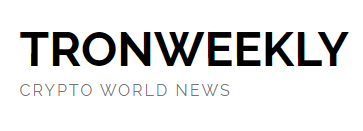You are here: Home / News / Tether Faces Massive Shake-Up: 66%–83% Reserves at Risk

February 13, 2025 by Aishwarya shashikumar
- Tether’s reserves face scrutiny under U.S. stablecoin bills, with only 66%–83% in compliance, forcing potential asset sales.
- European regulations already impacted Tether, leading to exchange delistings, but the U.S. market poses a bigger threat.
- Market shifts expected, with Bitcoin, precious metals, and stablecoin competitors affected if Tether restructures reserves.
The U.S. is tightening its grip on stablecoin regulations. Tether, the dominant stablecoin issuer, may need to offload non-compliant assets to align with new rules. JPMorgan analysts say compliance could force the company to sell Bitcoin, precious metals, corporate paper, and secured loans.
Two key bills are under consideration: the STABLE Act in the House and the GENIUS Act in the Senate. Both propose stringent regulations, requiring stablecoin issuers to obtain licenses, implement risk management protocols, and maintain full 1:1 reserve backing. While the STABLE Act allows state-level oversight, the GENIUS Act enforces federal supervision for major issuers. According to JPMorgan analysts, led by Nikolaos Panigirtzoglou, these regulations could significantly impact the firm’s operations.
JPMorgan analysts report that Tether’s compliance with proposed U.S. stablecoin regulations is inconsistent. Around 66% of its reserves meet the requirements set by the STABLE Act, while 83% align with the GENIUS Act.
These numbers mark a drop since mid-2024, when stablecoin supply surged. If either bill passes, Tether must restructure its reserves to rely more on U.S. Treasuries and liquid assets.
Tether’s Regulatory Struggles in Europe
Tether has already faced obstacles in Europe. The Markets in Crypto-Assets (MiCA) framework requires major stablecoins to hold 60% of reserves in European banks. As a result, the token was delisted from multiple exchanges. However, the impact was limited due to the firm’s smaller market share in Europe.
The U.S. market presents a much bigger hurdle. The token dominates with nearly 60% of the stablecoin market. If regulations demand more transparency and frequent reserve audits, the token’s hold on the market may weaken. The analysts warn that tighter rules could erode investor confidence and push the altcoin to shift reserves.
If Tether is forced to sell its non-compliant assets, the market could see notable shifts. Bitcoin prices might decline as the firm liquidates its holdings, adding selling pressure. Precious metals could also face volatility, depending on the scale of asset offloading. Meanwhile, the stablecoin sector may grow more competitive, with rivals like Circle’s USDC potentially benefiting from the firm’s regulatory challenges.
Regulatory enforcement could reshape the stablecoin market. JPMorgan analysts expect these bills to pass later this year. If so, Tether will need to adapt—or risk losing its dominance.

 7 months ago
47
7 months ago
47




 English (US) ·
English (US) ·